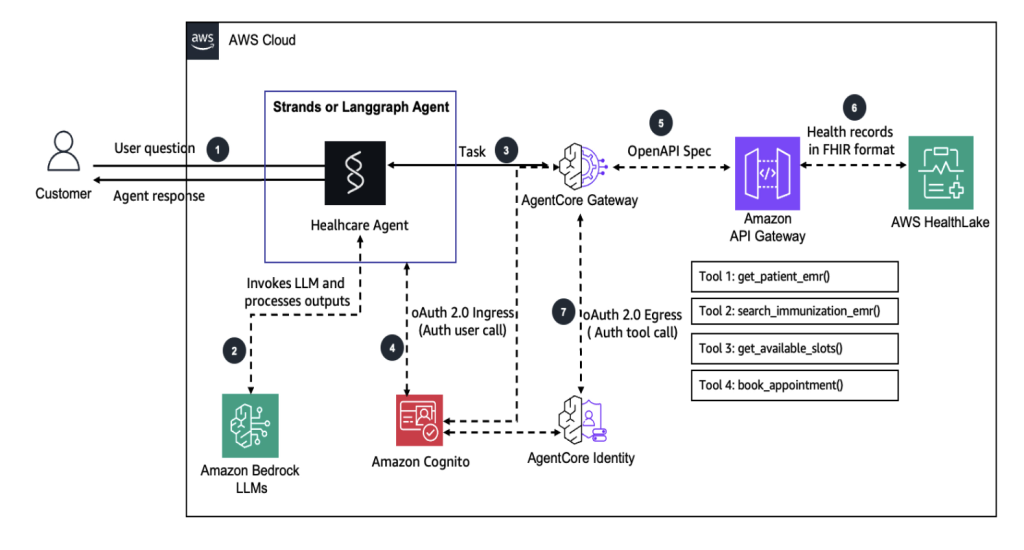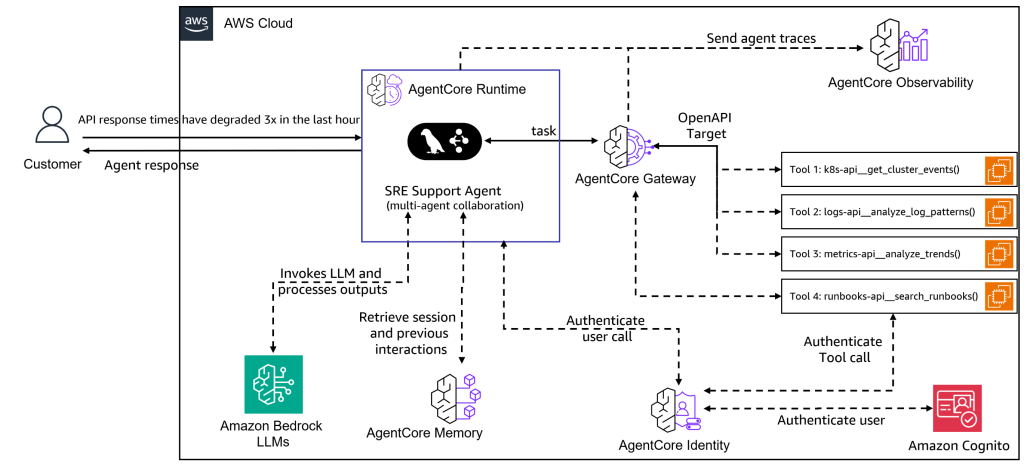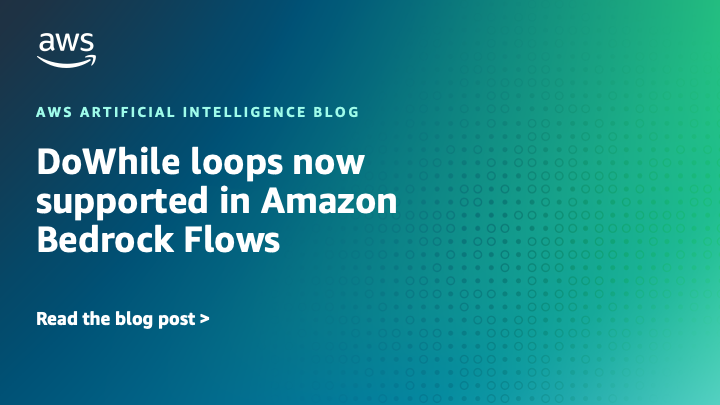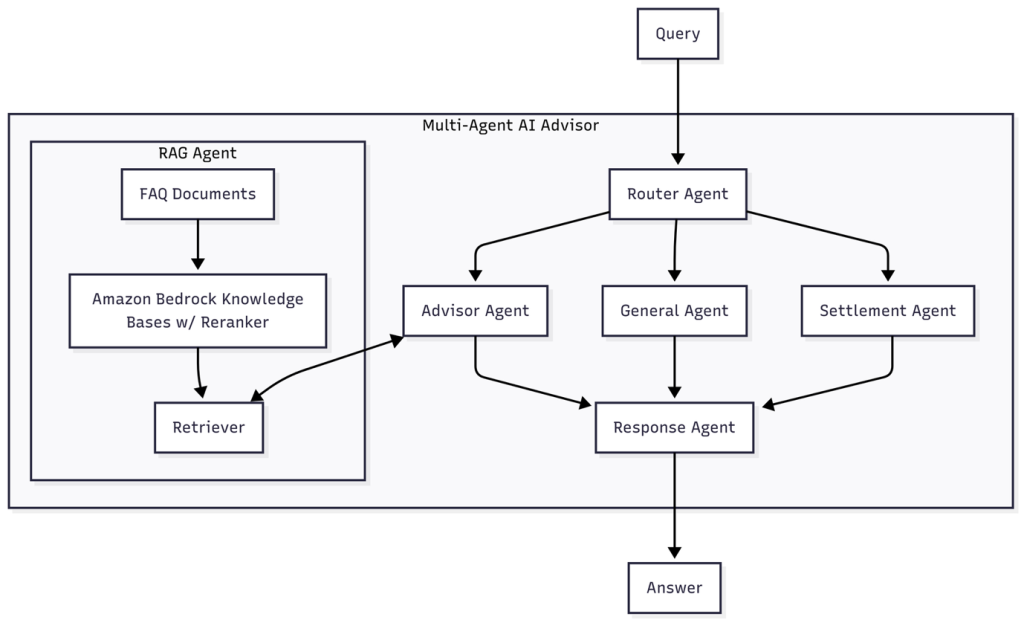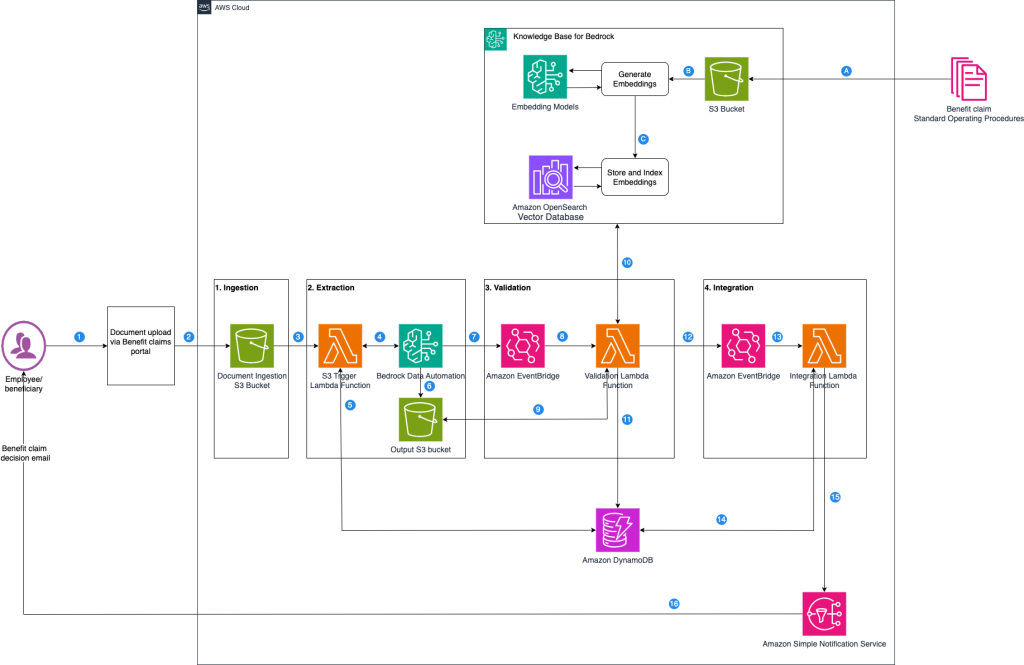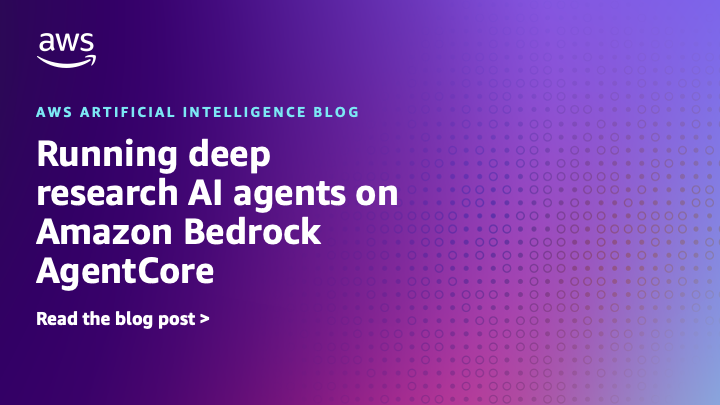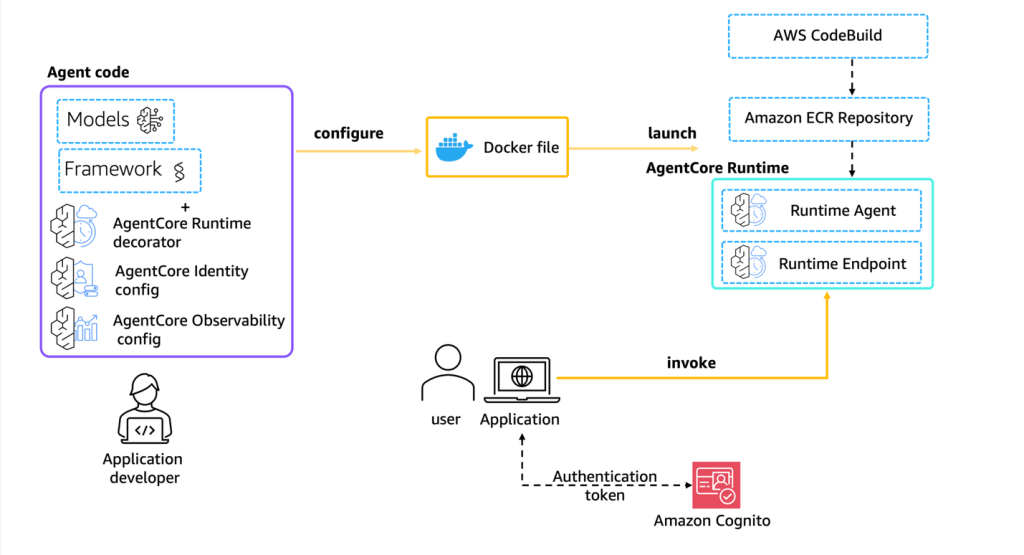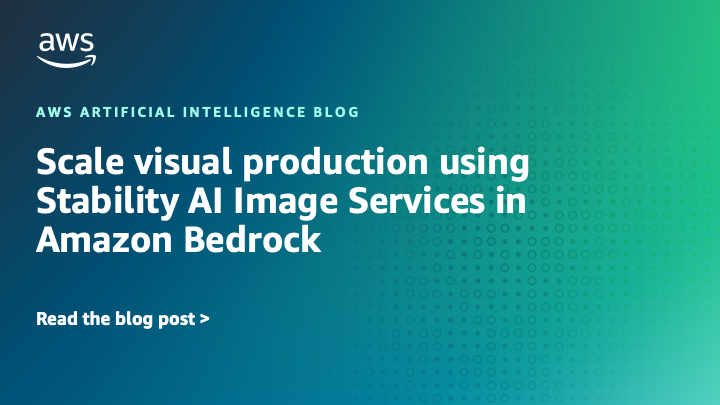Artificial Intelligence
Category: Amazon Machine Learning
Building health care agents using Amazon Bedrock AgentCore
In this solution, we demonstrate how the user (a parent) can interact with a Strands or LangGraph agent in conversational style and get information about the immunization history and schedule of their child, inquire about the available slots, and book appointments. With some changes, AI agents can be made event-driven so that they can automatically send reminders, book appointments, and so on.
Build multi-agent site reliability engineering assistants with Amazon Bedrock AgentCore
In this post, we demonstrate how to build a multi-agent SRE assistant using Amazon Bedrock AgentCore, LangGraph, and the Model Context Protocol (MCP). This system deploys specialized AI agents that collaborate to provide the deep, contextual intelligence that modern SRE teams need for effective incident response and infrastructure management.
DoWhile loops now supported in Amazon Bedrock Flows
Today, we are excited to announce support for DoWhile loops in Amazon Bedrock Flows. With this powerful new capability, you can create iterative, condition-based workflows directly within your Amazon Bedrock flows, using Prompt nodes, AWS Lambda functions, Amazon Bedrock Agents, Amazon Bedrock Flows inline code, Amazon Bedrock Knowledge Bases, Amazon Simple Storage Service (Amazon S3), […]
How PropHero built an intelligent property investment advisor with continuous evaluation using Amazon Bedrock
In this post, we explore how we built a multi-agent conversational AI system using Amazon Bedrock that delivers knowledge-grounded property investment advice. We explore the agent architecture, model selection strategy, and comprehensive continuous evaluation system that facilitates quality conversations while facilitating rapid iteration and improvement.
Accelerate benefits claims processing with Amazon Bedrock Data Automation
In the benefits administration industry, claims processing is a vital operational pillar that makes sure employees and beneficiaries receive timely benefits, such as health, dental, or disability payments, while controlling costs and adhering to regulations like HIPAA and ERISA. In this post, we examine the typical benefit claims processing workflow and identify where generative AI-powered automation can deliver the greatest impact.
Running deep research AI agents on Amazon Bedrock AgentCore
AI agents are evolving beyond basic single-task helpers into more powerful systems that can plan, critique, and collaborate with other agents to solve complex problems. Deep Agents—a recently introduced framework built on LangGraph—bring these capabilities to life, enabling multi-agent workflows that mirror real-world team dynamics. The challenge, however, is not just building such agents but […]
Integrate tokenization with Amazon Bedrock Guardrails for secure data handling
In this post, we show you how to integrate Amazon Bedrock Guardrails with third-party tokenization services to protect sensitive data while maintaining data reversibility. By combining these technologies, organizations can implement stronger privacy controls while preserving the functionality of their generative AI applications and related systems.
Move your AI agents from proof of concept to production with Amazon Bedrock AgentCore
This post explores how Amazon Bedrock AgentCore helps you transition your agentic applications from experimental proof of concept to production-ready systems. We follow the journey of a customer support agent that evolves from a simple local prototype to a comprehensive, enterprise-grade solution capable of handling multiple concurrent users while maintaining security and performance standards.
Scale visual production using Stability AI Image Services in Amazon Bedrock
This post was written with Alex Gnibus of Stability AI. Stability AI Image Services are now available in Amazon Bedrock, offering ready-to-use media editing capabilities delivered through the Amazon Bedrock API. These image editing tools expand on the capabilities of Stability AI’s Stable Diffusion 3.5 models (SD3.5) and Stable Image Core and Ultra models, which […]
Prompting for precision with Stability AI Image Services in Amazon Bedrock
Amazon Bedrock now offers Stability AI Image Services: 9 tools that improve how businesses create and modify images. The technology extends Stable Diffusion and Stable Image models to give you precise control over image creation and editing. Clear prompts are critical—they provide art direction to the AI system. Strong prompts control specific elements like tone, […]
